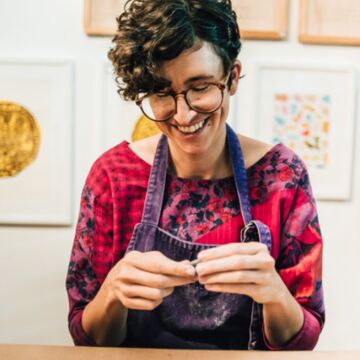

Eliza Fernand
Lecturer
Contact
Bio
Education: BFA, 2006, Pacific Northwest College of Art, Portland, OR; MFA, 2021, Sierra Nevada University, Incline Village, NV. Exhibitions: Roman Susan Art Foundation, Chicago; Urban Institute for Contemporary Arts, Grand Rapids, MI; Sweet Pass Sculpture Park, Dallas, TX; Center for Contemporary Art, Santa Fe, NM; Wassaic Project, Wassaic, NY. Bibliography: Chicago Artist Writers; Chicago Filmmakers. Awards: Seed Grant Recipient of ArtPrize and The Frey Foundation, Resident Artist at Wassaic Project, Creep in Residence at Ox-Bow School of Art.